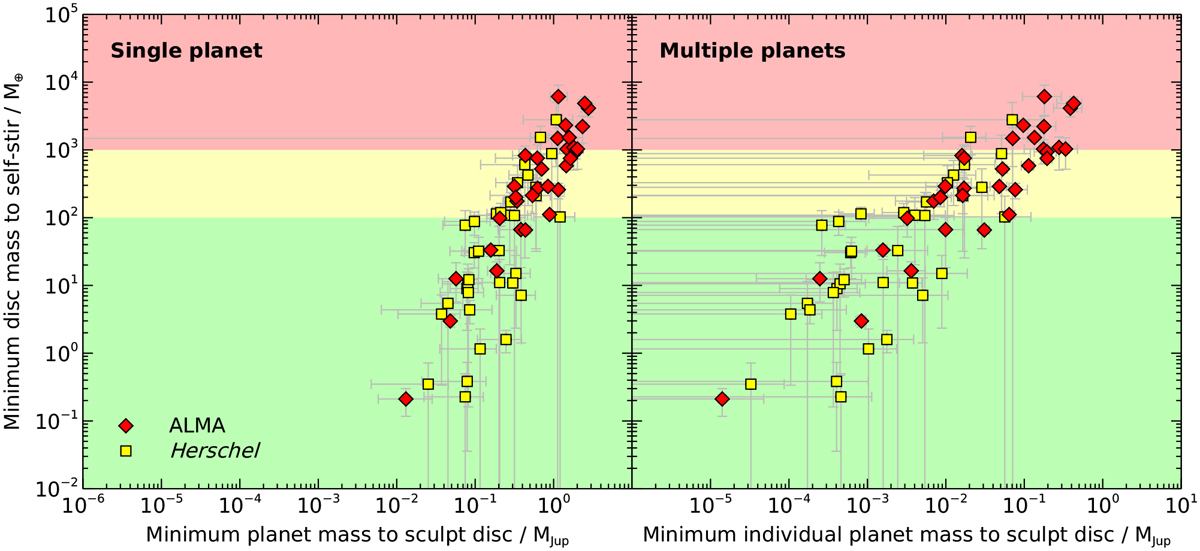Fig. 11

Download original image
Self-stirring constraints in systems with resolved debris discs. The vertical axis shows the minimum masses of discs required for those discs to be self-stirred (Sect. 4.1). Horizontal axes show the minimum planet masses required to sculpt the inner edges of those discs (Sect. 3) if debris clearing is performed by one planet (left plot) or by multiple, equal-mass planets (right plot). Symbols have the same meanings as in previous figures. Background colours denote debris disc masses that may be unfeasibly large (red), borderline (yellow), or allowed (green), according to the quantity of solids that may have been available at the protoplanetary disc stage (Krivov & Wyatt 2021). It may not be possible for discs in the red and yellow regions to be self-stirred, in which case other stirring mechanisms are required. Since these discs also typically require large planets to sculpt their inner edges, it is likely that planet-stirring operates in these systems, as shown in Sect. 4.2. The requirement for large planets to both stir and sculpt these discs makes systems in the yellow and red regions prime targets for future planet searches, as discussed in Sect. 5.2.
Current usage metrics show cumulative count of Article Views (full-text article views including HTML views, PDF and ePub downloads, according to the available data) and Abstracts Views on Vision4Press platform.
Data correspond to usage on the plateform after 2015. The current usage metrics is available 48-96 hours after online publication and is updated daily on week days.
Initial download of the metrics may take a while.


